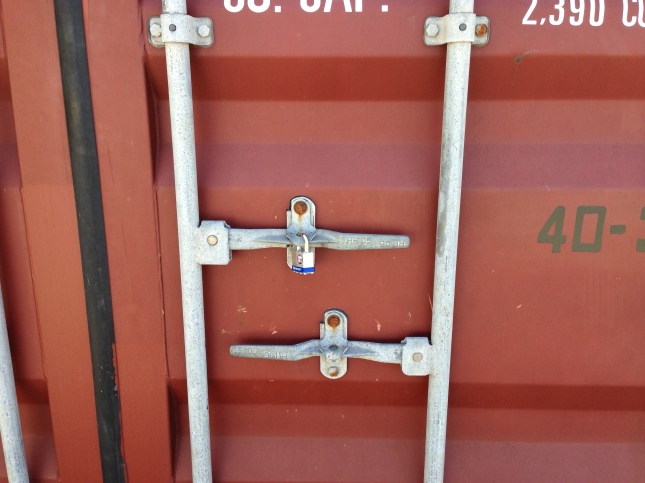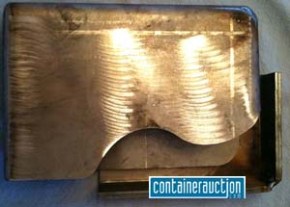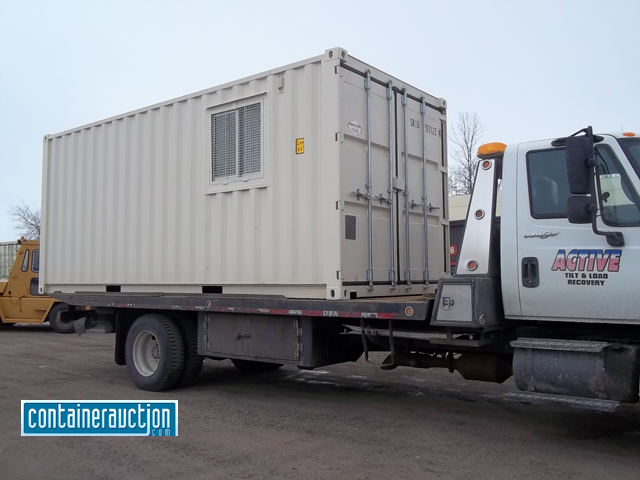Shipping containers that pass through any port in California are, by design, very safe. At it’s very essence, a shipping container is a 20′-40′ steel box with only one entrance/exit point, heavy steel doors with strong locking devices, and an exterior shell made of strong COR-TEN steel. Even with this built in strength, it’s important to keep in mind that a shipping container spends a majority of it’s life stacked on a shipping vessel, in a port or container depot, or on the back of a truck; in all of these places it’s under the watchful eye of an employee of the steam shipping company or professional security guard.
A Storage Container’s Weakest Point – and How to Fix It!
The weakest part of a used shipping container, especially when being used for storage, is the lock. Locks are purchased by the end user and can have any level of strength. Cheaper locks tend to be weaker, while expensive locks can be more secure, but much more expensive. No matter the type of lock, on most used shipping containers it’s exposed, as is the one in this picture.
There are several ways to protect your lock, and thus protect everything that’s inside of your shipping/storage container.
The obvious ways are the environment –
- Keeping your shipping container in a well lit area (which may mean that you need to move your container, which may not be an option).
- Buy a vicious Sacramento attack dog – which you’ll need to feed the dog, and possibly learn Dutch so that it understands your commands, and take out insurance just in case.
- Chain your box shut – You could run chains around your lock box, 20’x2, 8’x2, means that you’ll need a little more than 46′ of chain to go around your container once, and even more if you’ve got a 40′ container.
- Weld on lock box – a weld on lock box provides a “house” for your lock to live in. This means that anyone trying to break into the unit and would normally just cut the lock shank, now has to try and get access to the lock shank, which isn’t easy when it’s in a small enclosed area. The downside of weld on lock box is that you’ll need welding equipment.
- Bolt on container lock box – a bolt on lock box provides all of the benefits of a weld on lock box, but instead of welding it into place you only need to bolt it to your container. Once bolted on, it behaves the same as a welded on unit and your lock is nearly impossibly to cut (don’t lose the key!).
Obviously, choices 4 and 5 are the best options for securing your shipping container. A weld on lock box costs around $100 installed, and a bolt on lock box starts at around $50, without installation. Weld on units are available at your local depot or container reseller, and bolt on lock boxes can be purchased on ContainerLockBox.com.
Installing a bolt on lock box can be done in as little as 15 minutes if you’re prepared. It requires only common household tools: a drill, wrench or socket set, and possible a rattle can of paint if you purchase an unfinished lock box. ContainerLockBox.com provides videos on how to install a lock box, and you can download instructional material that you can print and take with you while you work.
If you have any questions about how to install a lock box on a shipping container please contact the folks at ContainerLockBox.com, or ContainerAuction.com. They’ve been helping to secure used shipping containers for years and will gladly provide you with the assistance that you need to make sure your possessions are safe and secure.



